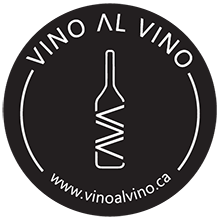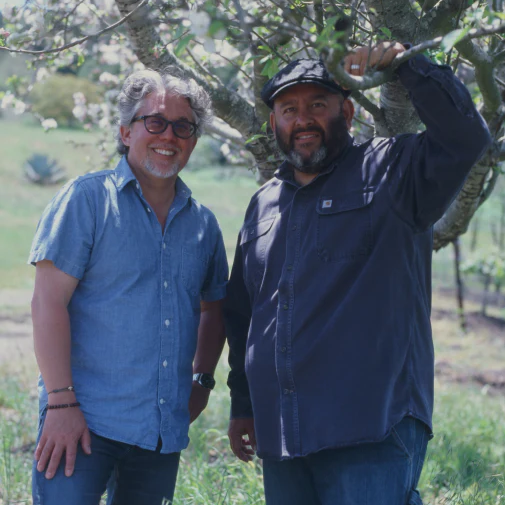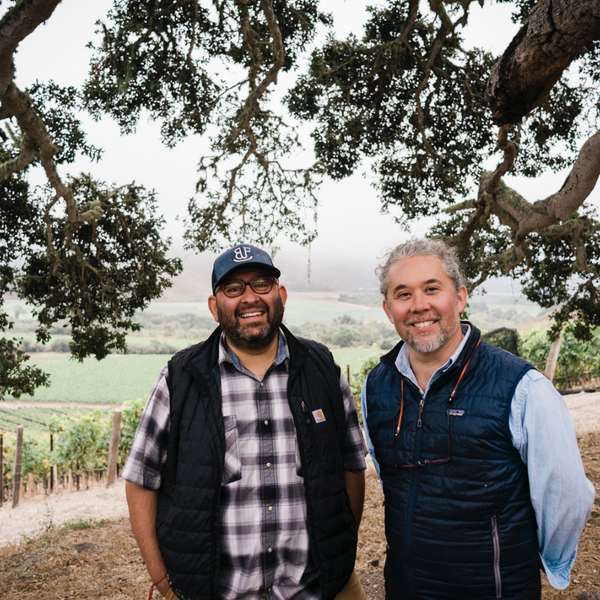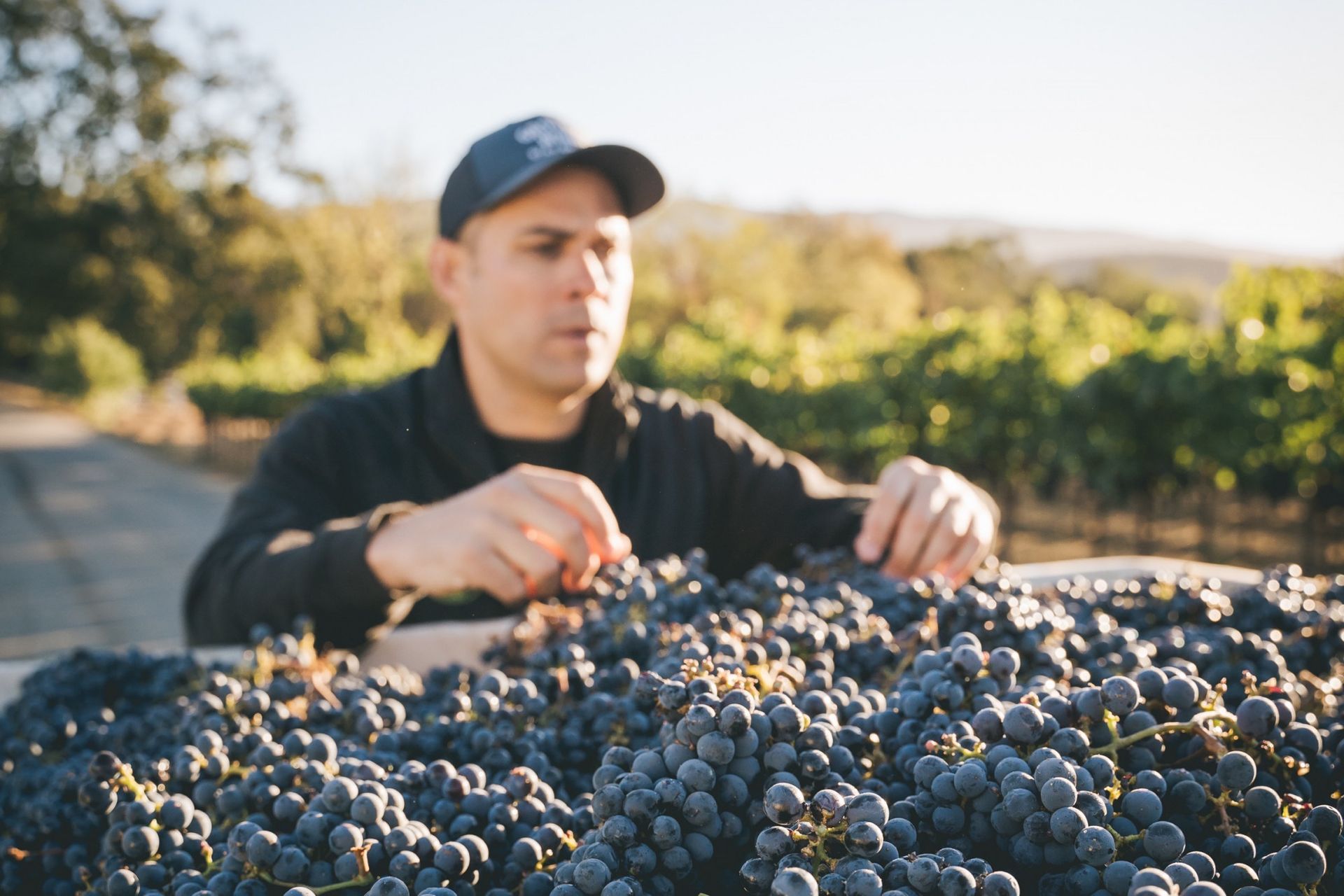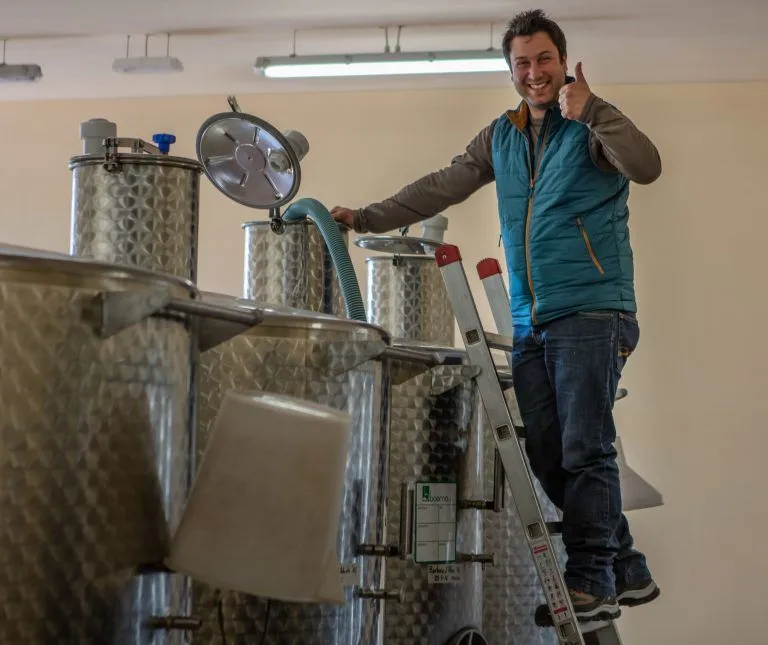Prosecco | The In-depth Guide
If you are a fan of sparkling wines or just delving into the world of bubbles you have probably heard of Prosecco. This wine originates from Italy, has a light body, a fresh taste and an intense fruity aroma. A great option to enjoy bubbles!
In this article, we will tell you everything you need to know about Prosecco: what exactly is Prosecco, what types of Prosecco you can find
and
what are the big differences between Prosecco and Champagne.
What is Prosecco?
Prosecco is an Italian white wine originating from the Valdobbiadene region in Italy. Valdobiadene is located in the Veneto area, in the northeast of Italy, more specifically in the Prosecco region. Prosecco is typically a sparkling wine but the wine is made as a still wine (“tranquillo”) that is primarily consumed in the region and rarely exported. The Prosecco DOC or DOCG zones cover a large area spanning nine provinces in the Veneto and Friuli Venezia Giulia regions. Prosecco derives its name from the village of Prosecco in the province of Trieste.
This wine is made with at least 85% of Glera grapes with the remaining 15% made up of other grapes. Among them Verdiso, Bianchetta Trevigiana, Perera and Chardonnay. This wine is distinguished by its pale straw color, sweet and floral aroma and incredibly fresh taste.
We could describe Prosecco taste as very fruity, with reminiscences of white peach, honeydew melon and even green apple. Now, you maybe wonder: how to serve Prosecco? Well, in order to enjoy it at its best and appreciate all its nuances, we recommend serving Prosecco as chilled as possible.
How is Prosecco made?

Prosecco is made using the
Charmat method, also known as
Cuve Close, Italian Method, Tank Method, or the Martinotti method. This method is composed of the following steps:
1. Harvest
Grapes are harvested early to allow them to maintain high levels of acidity, essential for a high quality Prosecco.
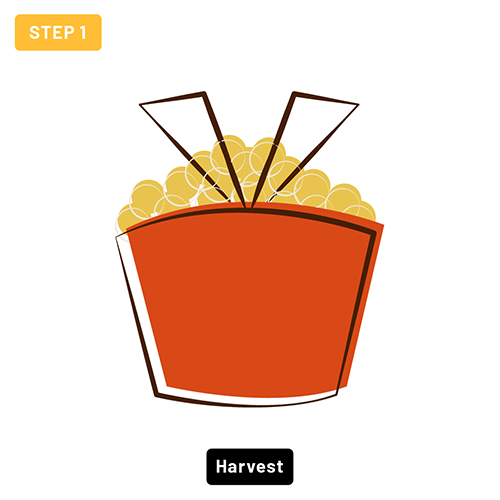
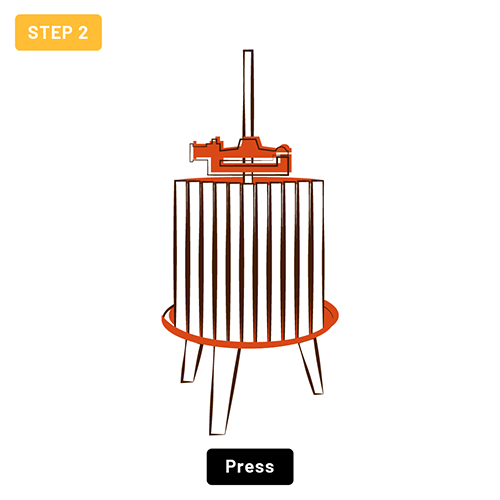
2. Press
Grapes are then gently pressed.
3. Primary fermentation
In primary fermentation, the grape juice is placed in stainless steel tanks. Here, the aim is to obtain a white wine, with a lower alcohol content and a fruitier flavor than the product that will be obtained at the end of the process.
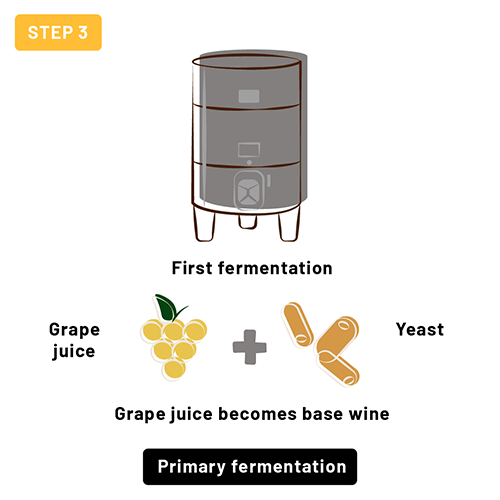
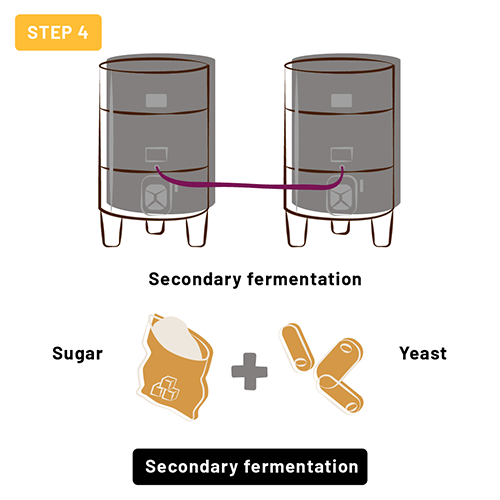
4. Secondary fermentation
The second stage, known as secondary fermentation, is carried out by transferring the fermented grape juice to a stainless steel tank. In addition, sugar and yeast are added to form what is known as ''wine's tirage''. This stage can last between 3 and 12 months, and this is where the magic happens, as the bubbles that make the wine ''sparkling'' appear.
5. Cooling
When the wine has achieved the desired level of bubbles, the spent yeasts cells (the lees or “lieviti” in Italian) will settle to the bottom of the tank while the fermentation process continues. In order to stop the fermentation, it is necessary to cool the tank and its content.
The cooling process is carried out which stops the fermentation process. Cooling is carried out using machinery, which takes advantage of the capacity of cold and heat transmission of the stainless steel to cool the sparkling wine.
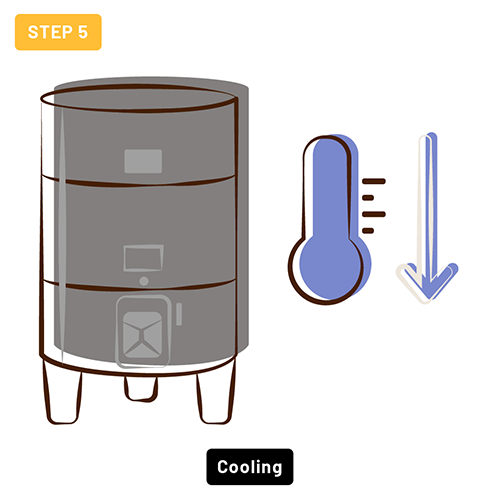
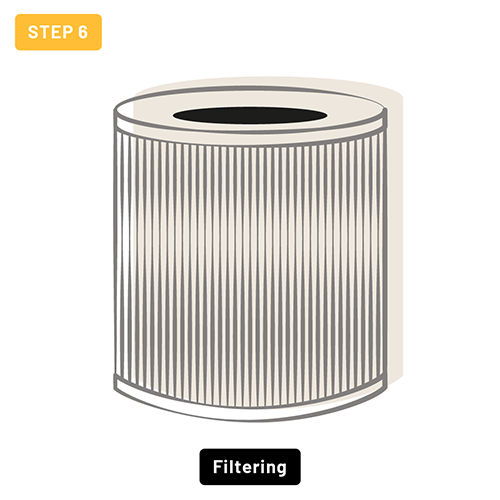
6. Filtering
Then, the Prosecco is filtered. This allows the removal of the lees left over from the first and second fermentation. For this, a large filter is used, which allows the wine to pass ''clean'' of yeasts from one tank to another.
It is important to note that not all wines are filtered. If you pick up a bottle and you see yellowish sediment at the bottom of the bottle, these are the lees. They play an important role in the bottle aging process and help to develop secondary and tertiary aromas giving the wines an added layer of complexity. Wines with lees (yeast cells) are denoted as “sui lieviti” in Italian and “sur lie” in French, meaning “on the lees”. Prosecco wines on the lees are branded as Col Fondo (translated from Italian means “with the (lees) bottom”.
7. Dosage
Dosage consists of adding sugar to the wine after filtering. The amount of sugar to be added will depend on the type of Prosecco you want to achieve. There are 4 types of Prosecco in the classification of ''sweetness'':
- Brut Nature: It has between 0 and 3 grams of residual sugar per liter.
- Extra Brut: It has between 3 and 6 grams of residual sugar per liter denotes 0-6 grams.
- Brut Style: It's the least sweet Prosecco. It has between 0 and 12 grams of residual sugar per liter.
- Extra Dry: It's sweeter than Brut. It has between 12 and 17 grams of residual sugar per liter.
- Dry: It's sweeter than Brut and Extra Dry. It has between 17 and 32 grams of residual sugar per liter.
- Demi-Sec style: This is the sweetest style Prosecco. It has between 32 and 50 grams of residual sugar per liter.
It is necessary to take into account that, in general, a higher sugar level implies a higher alcoholic graduation level, although this rule is not always fulfilled.
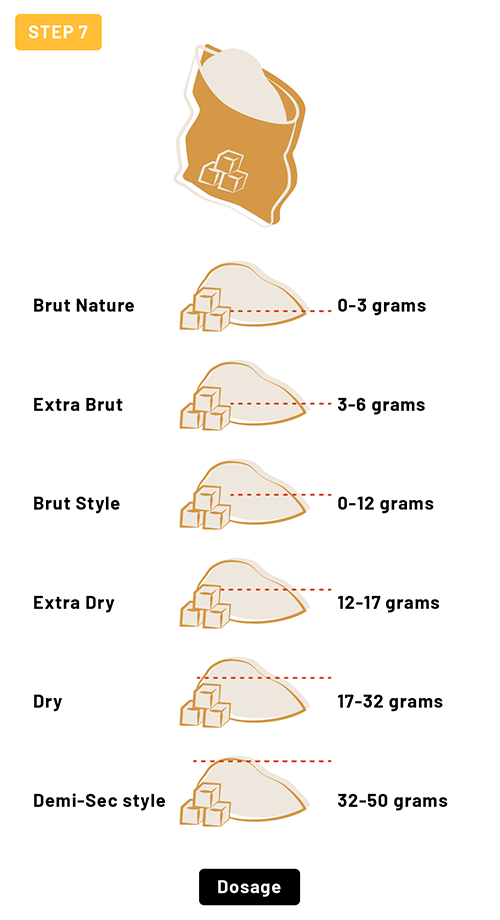
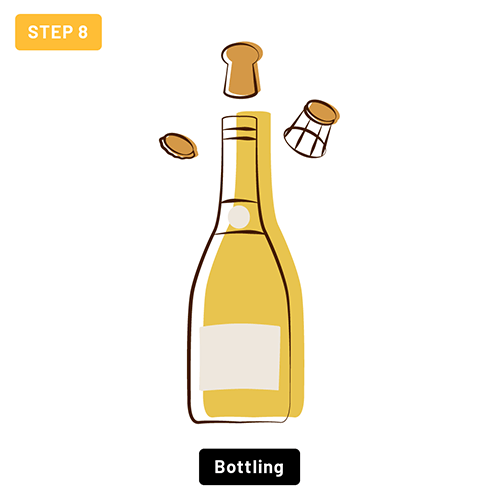
8. Bottling
In the final step, the Prosecco is bottled. But for that it is necessary to keep the bottle with the wine under pressure, until it is sealed. This allows the bubbles to remain in the bottle until it reaches your table. Bottles are enclosed with either a mushroom shaped cork like Champagne or a crown cap.
What’s the difference between Prosecco and Champagne?
Prosecco and Champagne are both sparkling wines but there are some key differences between them:
Country of Origin
While
Prosecco can only be called Prosecco if it is made in
Italy, mainly in the
Veneto region, a wine can only be called
Champagne
if it is made in the
Champagne region, located in Eastern
France.
Production Process
While Prosecco is produced using the Charmat Method, Champagne is produced by the Méthode Champenoise.
Fermentation
Although both wines undergo a
double fermentation, the place where this occurs is
different. While in Prosecco it occurs
inside a stainless steel tank, in the case of
Champagne it occurs
inside the bottle.
Grapes
The grapes used for each wine are also different. In the case of Prosecco, at least 85% Glera grapes are used, while grapes such as
Verdiso or
Chardonnay can also be used. Moreover, the 3 main varieties used to produce
Champagne are
Chardonnay but also the red grapes Pinot Noir
and Pinot Meunier.
Atmospheric Pressure
The
atmospheric pressure that each wine receives is different. In the case of
Prosecco, the pressure
varies between 1 and 4 bars. On the other hand, in
Champagne the atmospheres of pressure are between
6 and 7 bars.
Bubbles
In Champagne, the bubbles are smaller and the perlage is more refined.
Alcohol Level
Finally, another difference is the percentage of alcohol in each wine. Prosecco typically has a lower ABV than Champagne (11-12% ABV vs. 12-13% ABV).
Price
The Méthode Champenoise requires more effort which in turn drives the price higher as the wine receives more input. Champagne has managed to brand itself as a premium sparkling wine which drives a further premium over Prosecco.
What are the different types of prosecco?
There are three different types of Prosecco:
- Tranquillo: Tranquillo, also known as still wine, is a type of Prosecco that has no bubbles. Prosecco wine of this variety is mostly consumed close to where it is produced, in the northeast of Italy.
- Frizzante:
Frizzante is a semi-sparkling type of Prosecco, which has received an atmospheric pressure of between 1 and 2.5 bars. As a result, a Prosecco with less persistent bubbles is obtained.
- Spumante: The best known version of Prosecco. This type usually receives an atmospheric pressure of about 3 bars, and can reach up to 4. Therefore, in this Prosecco the bubbles will be more persistent.
What are the DOCs of Prosecco?
Prosecco currently has
5 DOCs (Denominazione di Origine Controllata):
Prosecco DOC is the most common DOC for Prosecco wine. and it covers 4 provinces, located in the regions of Veneto and Friuli-Venezia Giulia. It includes two subzones, one in the province of Treviso and the other in the province of Trieste, each with its own DOC (Prosecco Treviso DOC and Prosecco Trieste DOC).
This DOCG covers blended grapes from the hills located between Valdobbiadene and Conegliano.
This region tends to produce very concentrated Prosecco wines.
Asolo Prosecco DOCG
Prosecco with this DOCG are among the finest and of the highest quality standards. The production area is limited to the hills across the river from the regions of Conegliano and Valdobbiadene.
Prosecco Conegliano Valdobbiadene Superiore Rive DOCG
This DOCG is even more limited. It only covers certain specific vineyards in the Conegliano and Valdobbiadene regions, located in 43 communes.
Valdobbiadene Superiore di Cartizze DOCG
This is
the most confined DOCG. It covers only
265 acres, located on the
westside of Valdobbiadene. This area is highly valued because it is
one of the best lands for growing Prosecco grapes.
Prosecco Producers We Love
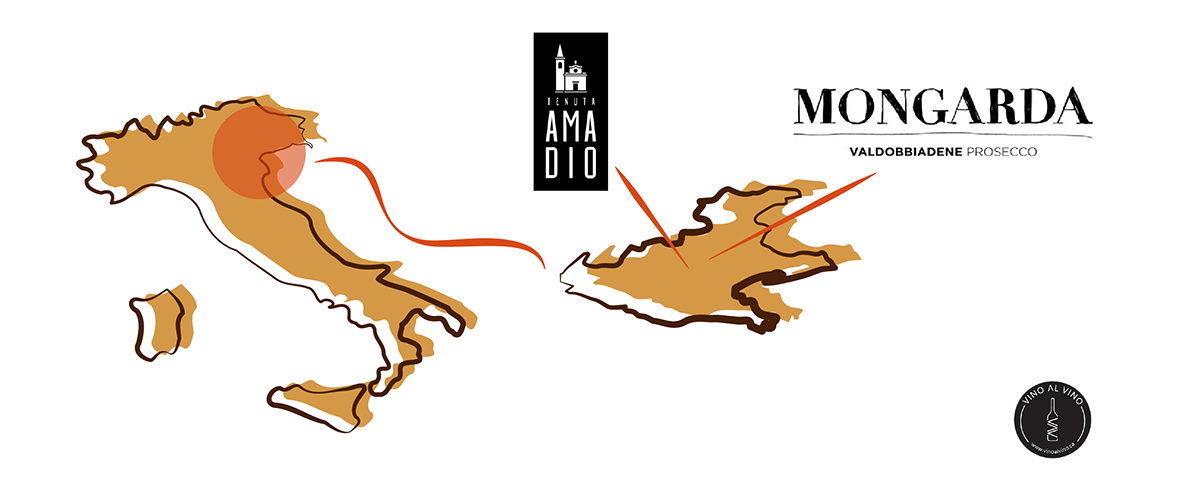
If you are just discovering the wonderful world of Prosecco and want to learn more about it, here are two Italian brands with organic production methods: Tenuta Amadio and Mongarda.
Tenuta Amadio
The Tenuta Amadio estate is located in the village of Monfumo, in the heart of the Prosecco Superiore DOCG of Asolo. Tenuta Amadio cultivates 12 hectares of vineyards located on the volcanic slopes of the Dolomites. Three vineyards are cultivated entirely by hand (Vigneto del Biss, Vigneto del Longon and Vigneto Era Grande). They differ not only in name, but also in terroir, something that gives particular characteristics to each wine.
Tenuta Amadio stands out for its careful vinification on a small scale, as well as for its sustainable agriculture method.
Tenuta Amadio has 4 outstanding wines: Monfumino Brut Prosecco DOC, Dry Millesimato Prosecco DOCG, Extra Dry Prosecco DOCG, Brut Prosecco DOCG.
- Monfumino Brut Prosecco DOC: This could be considered Tenuta Amadio's entry-level wine: it is a very refreshing and balanced wine, with bubbles present but not invasive. In addition, its bright yellow color (all natural) is very attractive to the eye. On the palate, you can feel notes of elegant apple and fresh pear, as well as nuances of white flowers and rennet.
- Dry Millesimato Prosecco DOCG: This wine was made, in the words of its producers, with ''a careful selection of the estate's ripest and most golden grapes''. It has a soaring acidity, but this is very well-balanced thanks to the 14 g/l dosage. While you will notice a pale yellow color in the glass, you will be surprised to note the great creaminess present in this wine. It has a floral flavor profile, with notes of rose and acacia, and subtle sweet notes of white peach and apple. Its sweet and balanced flavor is perfect for pairing with roasted fish dishes, spicier fare or lighter desserts.
- Extra Dry Prosecco DOCG: The first thing you will notice when tasting this wine is a marked acidity in the mouth, while feeling the bubbles run through your palate. It has a bright yellow color in the glass, and notes of green apple, pears and acacia honey, something that not only balances the acidity with a sweet taste, but makes this wine very refreshing. It is a perfect pair for meals with chili (such as Mexican or Indian food), ginger or aromatic spices.
- Brut Prosecco DOCG: This wine is Amadio's driest experience. It has a straw yellow color, and notes that will remind you of green fruits and citrus. On the palate, you will notice a bright and sweet taste. It is a perfect wine to pair with a delicious plate of frutti di mare!
Mongarda
Mongarda is an iconic family farm located in Valdobbiadene, a key Prosecco production region. It cultivates 12 hectares, distributed in 6 plots that are located on steep slopes, with an average inclination of 28-52%, and calcareous soils. Talk about heroic viticulture!
The particular soil type gives Valdobbiadene wines a natural acidity, as well as offering great drainage.
Mongarda's production method has many particular aspects:
- All the cultivation and harvesting work is done by hand, due to the steep slopes of the land.
- Only native grapes Glera, Verdiso, Bianchetta, Perera and Boschera are used.
- During harvest, the grape bunches are collected in small boxes to avoid crushing the berries.
Mongarda has two Prosecco wines available for you to taste: Prosecco Brut DOCG and Prosecco Extra Dry DOCG.
- Prosecco Brut DOCG: The grapes for this wine come from the oldest family plantations. It is a clear example that excellent results can be obtained with low production levels. This wine has low sugar levels, but that does not make it lose sweetness. The notes of honeysuckle, apple, lime and pear make it more agile and vibrant on the palate.
- Prosecco Extra Dry DOCG: This wine is the most balanced of Mongarda's wines. Before drinking it, you will feel very attractive aromas of wild flowers and pear slices, which reflect the natural winemaking process of this wine. But without a doubt, something magical happens on the palate: the flavors of citrus, crisp apple and fresh ginger meet the acidity, smoothness and creaminess of this wine. That, coupled with the clean and dry finish, will surely encourage you to take a second or third sip.
Where to find Prosecco wines in Alberta?
- 121 Jasper Liquor
- 5 Vines Wine Craft Beer & Spirits
- Andrew Hilton Wine & Spirits
- Athlone Liquor & Cold Beer Store
- Bin 905 Distinct Wines
- Bricks Wine Co.
- Color De Vino
- Crestwood Fine Wines & Spirits
- Devine Wines & Spirits
- Eastport Liquor Store
- Glenora Fine Wines & Spirits
- Highlander Liquor Store
- Highlands Liquor
- Kegs And More Liquor
- Our Daily Brett
- Richmond Hill Wines
- River Café
- Rosslyn Inn & Suites
- Uccellino
- Vine Arts Wine And Spirits
- Willow Park Wines & Spirits
- Zyn The Wine Market
Final Thoughts
Prosecco is a great sparkling wine. Although it shares similarities with Champagne, the two wines are quite different from one another. When drinking a Prosecco, you will find a more green apple or honeydew oriented profile of notes, while in Champagne you will find a more citric profile of notes. Whichever wine you choose, both are perfect for relaxing in the evening, while watching the sun go down.
Vino Al Vino is a Western Canadian wine importer and wine wholesaler specializing in real wines, wines with minimal intervention. All of our wines are sustainable. Almost all of our wines are certified organic. Many of our wines are certified biodynamic. Many of our wines are full-throttle zero-zero natural wines.
News, Views and Happenings from Vino al Vino
New Paragraph
Contact Us
We will get back to you as soon as possible.
Please try again later.
*You are consenting to receive marketing emails from us. You can revoke your consent at any time by unsubscribing.
2014 - 2025 © All Rights Reserved Vino Al Vino Inc.
